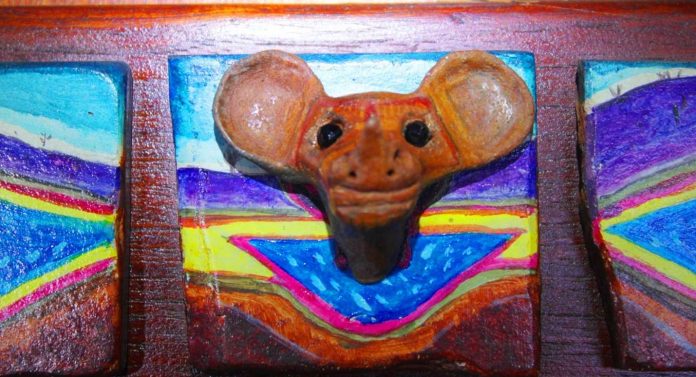In the archaeological field, different series of ceramic designs have been identified. These unique decorations define an era and a cultural heritage identity. In Aruba, our Caquetian ancestors developed an original style classified as Dabajuroid by prehistory scholars, a name related to the nearby city of Dabajuro in the southwestern region of the Venezuelan state of Falcón.
The designs applied in our gallery Etnia Nativa, focuses on geometric decorations and motifs of the Dabajuroid style. By understanding decoration as a communicative instrument, our designs and productions starts from the moment we locate the right source, to extract the same raw earth material that would have generate the products according to the procedure of the ancestral inhabitants of the island who used local clay for their ceramic vessels and ritual objects.
The Dabajuro style is among the most complex works in this region. The classic painted on designs were made in red, black or white, including various forms of incision, applications and stippling were also part of their pottery décor.
The larger pots demonstrate the mastery and excellence of the Dabajuro potters as it is difficult to bake such large pots in a simple open air kiln: as soon as temperature differences develop within such the kilns, large pots like these were prone to crack. The decorated pottery were finer and of superb quality. Two main decorating techniques have been applied, painted designs and applique modeling. The painted parts are manly darker compared to the background or of lighter color of the boat. Colors such as brown, reddish brown, red and black were used. The other decoration technique is modeling. From simple motifs such as wavy edges, extra application rings around the edge of the vessel, also complicated works as interpreting stylized animal heads, such as frogs, bats, birds, turtles, etc. were also produced.
The clay works in our peculiar and unique museum reflect our energy in a mystical silence. Every shape and detail printed on what we create says something about who we are and what we represent as an cultural entity. Working with clay is a work of self-knowledge where creativity arises through emotion and fluidity. Etnia Nativa treats raw clay in the traditional indigenous way. We identify the best material by looking for raw clay. For this we distinguish high quality clay from the rest of the soil. Then by adding water, we purify the material thus contributing to the cleaning process. During this stage the clay is purified and detoxified, dehydrated to the point that it is ready to be molded in to the desire shapes.
Imagine tracing cultural and social transformation through works using all four main element Earth, wind fire and waters. A method which connects us with our ancestral origins through this simple and abundant material called clay, a billion years old material, earth which gives its name to our planet.
Every handmade piece is a unique ceramic design, pride it owner. For Etnia Nativa working with clay teaches us to be calm and relaxed in order to focus in to ourselves.
Did you say that you love Aruba its origins and cultural heritage? Than this private encounter with our columnist anthropologist is just as you. Sessions created in a gorgeous setting for visitor with special interests. Appointment is required. etnianativa03@gmail.com or Whatsapp us 297 592 2702 for a private reservation.












